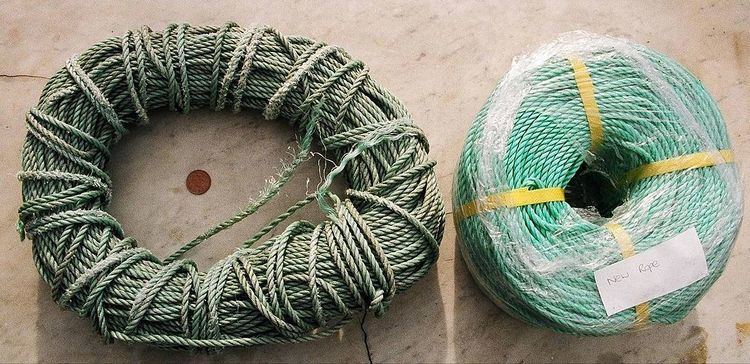 | ||
Photo-oxidation is the degradation of a polymer surface in the presence of oxygen or ozone. The effect is facilitated by radiant energy such as UV or artificial light. This process is the most significant factor in weathering of polymers. Photo-oxidation is a chemical change that reduces the polymer's molecular weight. As a consequence of this change the material becomes more brittle, with a reduction in its tensile, impact and elongation strength. Discoloration and loss of surface smoothness accompany photo-oxidation. High temperature and localized stress concentrations are factors that significantly increase the effect of photo-oxidation.
Contents
Photo-oxidation protection
Poly(ethylene-naphthalate) (PEN) can be protected by applying a zinc oxide coating, which acts as protective film reducing the diffusion of oxygen. Zinc oxide can also be used on polycarbonate (PC) to decrease the oxidation and photo-yellowing rate caused by solar radiation.
Effects of dyes/pigments
Adding pigment light absorbers and photostabilizers (UV absorbers) is one way to minimise photo-oxidation in polymers. Antioxidants are used to inhibit the formation of hydroperoxides in the photo-oxidation process.
Dyes and pigments are used in polymer materials to provide color changing properties. These additives can reduce the rate of polymer degradation. Cu-phthalocyanine dye can help stabilize against degradation, but in other situations such as photochemical aging can actually accelerate degradation. The excited Cu-phthalocyanine may abstract hydrogen atoms from methyl groups in the PC, which increase the formation of free radicals. This acts as the starting points for the sequential photo-oxidation reactions leading to the degradation of the PC.
Electron transfer sensitization is a mechanism where the excited Cu-phthalocyanine abstracts electrons from PC to form Cu-Ph radical anion and PC radical cations. These species in the presence of oxygen can cause oxidation of the aromatic ring.
Chemical mechanism
Aldehydes, ketones and carboxylic acids along or at the end of polymer chains are generated by oxygenated species in photolysis of photo-oxidation. The initiation of photo-oxidation reactions is due to the existence of chromophoric groups in the macromolecules. Photo-oxidation can occur simultaneously with thermal degradation and each of these effects can accelerate the other.
The photo-oxidation reactions include chain scission, cross linking and secondary oxidative reactions. The following process steps can be considered:
- Initial step: Free radicals are formed by photon absorption.
- Chain Propagation step: A free radical reacts with oxygen to produce a polymer peroxy radical (POO•). This reacts with a polymer molecule to generate polymer hydroperoxide (POOH) and a new polymer alkyl radical (P•).
- Chain Branching: Polymer oxy radicals (PO•) and hydroxy radicals (HO•) are formed by photolysis.
- Termination step: Cross linking is a result of the reaction of different free radicals with each other.
where PH = Polymer
P• = Polymer alkyl radical
PO• = Polymer oxy radical (Polymer alkoxy radical)
POO• = Polymer peroxy radical (Polymer alkylperoxy radical)
POOH = Polymer hydroperoxide
HO• = hydroxy radical
